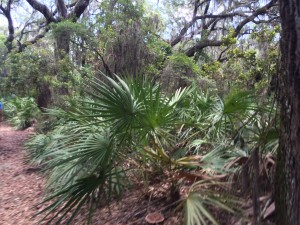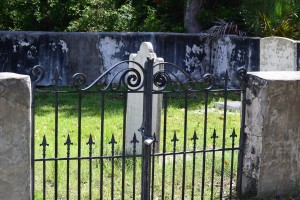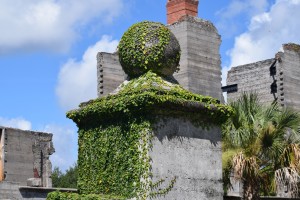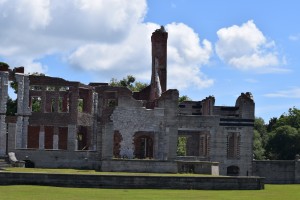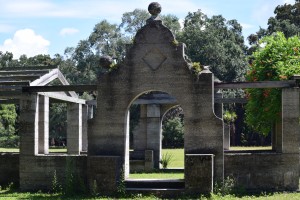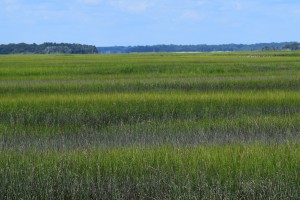Cumberland Island….is a hidden gem, still unbeknownst to the masses. And that’s a good thing.
 As a self proclaimed melodramatic curious wanderer interested in history…. upon first sight, this place ensnared that child-like wonder in me. You’re first view of Cumberland Island is overgrown webs of Spanish moss which carpet the overarching limbs of giant oak trees. (Side Note: Super fun fact about Spanish moss… it’s not moss! *gasp* I know! if you’re as over-
As a self proclaimed melodramatic curious wanderer interested in history…. upon first sight, this place ensnared that child-like wonder in me. You’re first view of Cumberland Island is overgrown webs of Spanish moss which carpet the overarching limbs of giant oak trees. (Side Note: Super fun fact about Spanish moss… it’s not moss! *gasp* I know! if you’re as over- caffeinated as I am right now, you too are egregiously concerned about this deception…. it’s not moss it’s a bromeliad which makes it closer in taxonomy to the pineapple and succulent families.*you’re welcome*). Light trickles through the canopy of Spanish moss as timid mammals scurry under the protection of
caffeinated as I am right now, you too are egregiously concerned about this deception…. it’s not moss it’s a bromeliad which makes it closer in taxonomy to the pineapple and succulent families.*you’re welcome*). Light trickles through the canopy of Spanish moss as timid mammals scurry under the protection of

endless green ferns and in the midst of this welcoming forrest are neatly carved walking paths…. but mind the horse poop. If you walk from one end to another 
 you’ll stumble across vastly changing environments ranging from an endless salt marsh, to sand dunes that best resemble a heard of oversized camel humps, and one hell of an expansive beach. And the clincher that really made me love this island, is the crumbling ruins of a mansion and traces of personal stories left to decay in the elements and history books.
you’ll stumble across vastly changing environments ranging from an endless salt marsh, to sand dunes that best resemble a heard of oversized camel humps, and one hell of an expansive beach. And the clincher that really made me love this island, is the crumbling ruins of a mansion and traces of personal stories left to decay in the elements and history books.
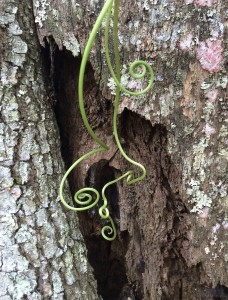 Cumberland Island was first inhabited by native americans, the Mocama people. The Spanish arrived in the 1550s and built a settlement on the island and they named the island San Pedro. Historical records show in 1681 there were as many as 300 Mocama and Spanish missionaries living on San Pedro. In 1683 French pirates looted the island and the following years were nothing but pirate skirmishes between the French and Spanish. In 1733 English General James Oglethorpe of Georgia arrived in on the scene and the island was renamed Cumberland Island. Oglethorpe built a hunting lodge on the island and named in Dungeness. Two forts were erected on the island and a small town came to fruition. Over the years, the forts and towns were abandoned and washed away in time. Revolutionary war hero Nathaniel Greene and his wife Catharine lived on the island until Nathaniel’s
Cumberland Island was first inhabited by native americans, the Mocama people. The Spanish arrived in the 1550s and built a settlement on the island and they named the island San Pedro. Historical records show in 1681 there were as many as 300 Mocama and Spanish missionaries living on San Pedro. In 1683 French pirates looted the island and the following years were nothing but pirate skirmishes between the French and Spanish. In 1733 English General James Oglethorpe of Georgia arrived in on the scene and the island was renamed Cumberland Island. Oglethorpe built a hunting lodge on the island and named in Dungeness. Two forts were erected on the island and a small town came to fruition. Over the years, the forts and towns were abandoned and washed away in time. Revolutionary war hero Nathaniel Greene and his wife Catharine lived on the island until Nathaniel’s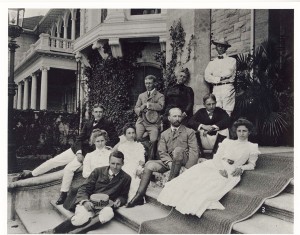 death in 1786. Ten years after Nathaniel’s death, Catharine remarried Phineas Miller and built a 4 story tabby mansion complete with 4 chimneys
death in 1786. Ten years after Nathaniel’s death, Catharine remarried Phineas Miller and built a 4 story tabby mansion complete with 4 chimneys
and 16 fireplaces. Catharine named the mansion Dungeness, after Oglethorpe’s hunting lodge. Further in the life of Cumberland Island, Thomas Carnegie, brother of Andrew Carnegie, brought his wife and 9 children to live on the island. The family moved out in 1925. And in 1959 a fire destroyed Dungeness.
The island was a great stop. We were excited to see a submarine skulk by up the ICW and soon after have a refreshing storm pass over while we safely remained on the hook. Mike and I enjoyed Cumberland Island but in the end we decided…. The South is too hot for us northerners in July… we soon left for Charleston, SC.
